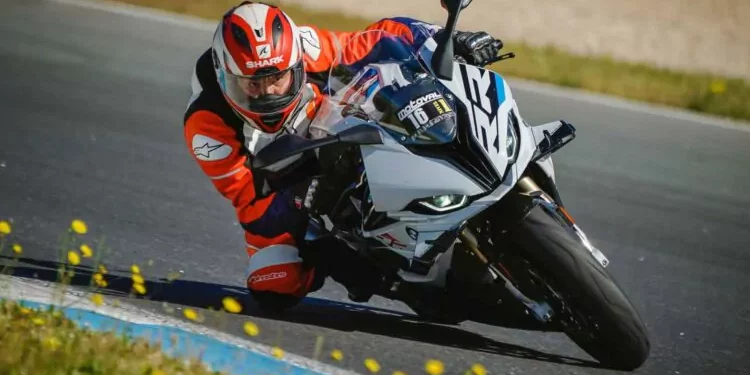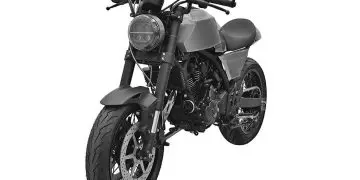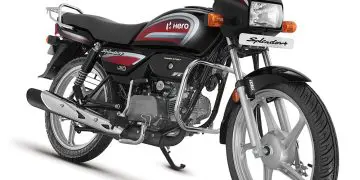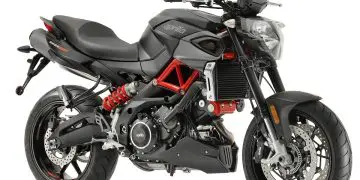There is always a lot of information about this, but since the helmet is the most important equipment when riding a motorcycle – and we don’t always find the most accurate or appropriate information on the internet – we will leave our opinion here, along with some tips, based on our many years of testing motorcycles. And why do we say that the helmet is the most important equipment? Because it is the only one that is mandatory, but also because it protects the most sensitive areas of our body, the face and head, and any fall – even at a very low speed – can result in a tragedy. So, if you usually watch videos of people riding motorcycles (and sometimes performing stunts) on closed roads or even in a backyard without a helmet, do not try to imitate them. Any mistake can be very costly.
Tips
First of all, we do not recommend buying a second-hand helmet. A helmet has a lifespan of 5 years – before some plastics and interior foams start to lose their properties – so it is better to invest in a new product and use it until the end. Furthermore, even in terms of hygiene, it will not be pleasant to use a helmet that has been on someone else’s head. For this reason, we also advise that, with some frequency (especially if it gets water inside during winter or a lot of sweat during summer), you remove the inner lining and wash it by hand with running water and your usual shampoo. Even the smell will be more pleasant!
Full-face helmet

Regarding the choice of helmet, it depends a lot on your available budget and the usage you will give it, but in general, for road riding, the full-face helmet will always be the best option. Because it offers good protection (we can talk about the various options in terms of construction materials another time) and because in terms of aerodynamics it will always be a better option, especially if you ride a motorcycle without aerodynamic protection. The helmet should fit snugly on the face and head (slightly squeezing the cheeks but without hurting), as it will slightly expand with use. If you wear glasses, don’t forget to try the helmet on with them, and if the helmet only has a dark visor mounted, don’t forget to also buy a clear visor. Even if you don’t usually ride at night, there will always be a day when you have to, and we strongly advise against wearing a dark visor or riding with an open visor. Another solution – which is usually not found in more sporty full-face helmets – is the inclusion of a small internal sun visor, which is often a good solution, so we don’t have to constantly change visors. Some more tips that apply to all types of helmets: don’t forget to check their European homologation on the inside, and in this case, the current ECE 22.06 is valid, but if you have an older helmet, you can still use it. Also important, and highly recommended, is the presence of a Pinlock, a film that is placed on the inside of the visor and prevents it from fogging up. And we all know how terrible it is to ride with a fogged-up visor! Another aspect to consider is how the helmet is fastened. It should fit snugly on our chin/neck, and although the double ring system may seem “outdated” at first glance, it is actually the safest and is found in sporty helmets, so it will never fail for sure.
Adventure
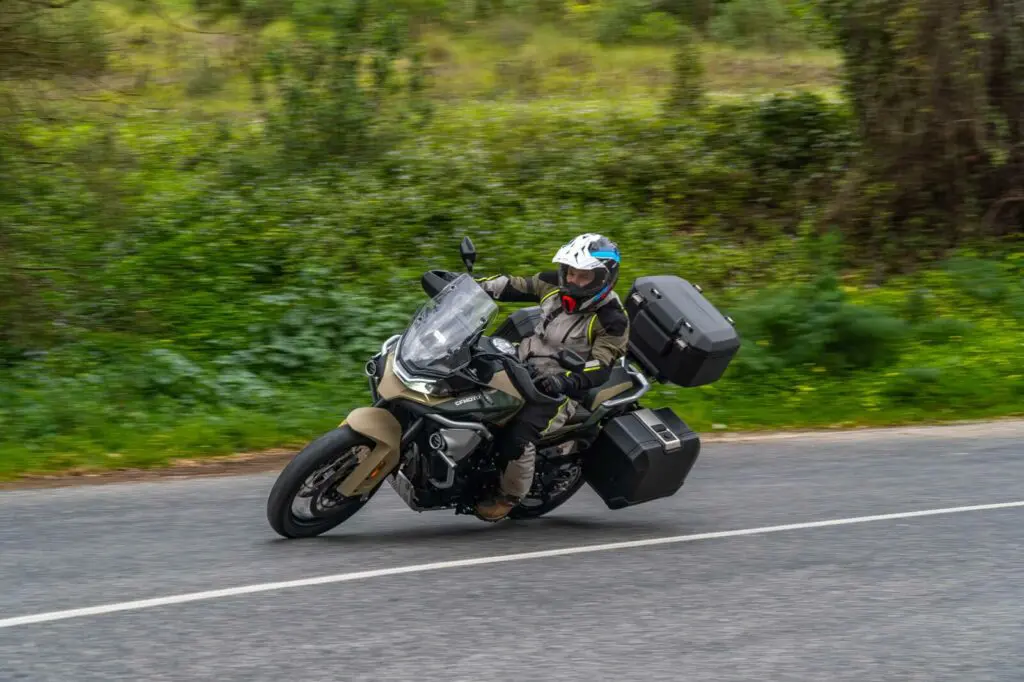
An adventure helmet is between a full-face helmet and an off-road helmet, so everything we said earlier also applies to this helmet, which is so popular among trail lovers. The biggest difference here is the visual, which is more similar to motocross helmets, with a peak and chin guard, although it also has a visor (and usually a sun visor on the inside). For intensive off-road use, it is usually possible to remove the visor and wear motocross goggles, which is another advantage of this type of helmet. However, due to the peak and chin guard, this type of helmet will never offer the same aerodynamic comfort on the highway as a full-face helmet, especially if the motorcycle does not provide high aerodynamic protection.
Modular
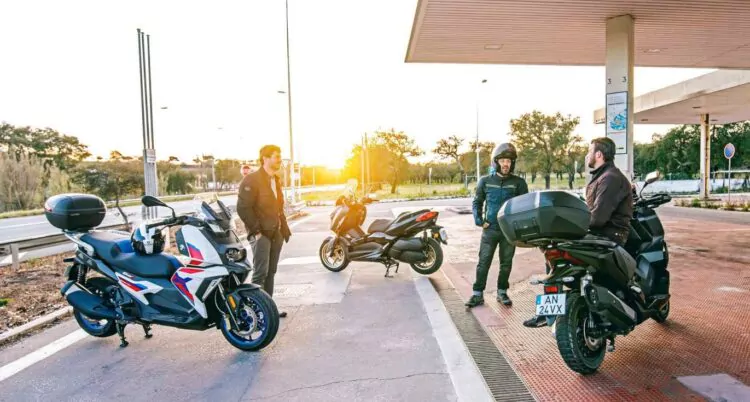
The modular helmet has grown in popularity over the past few years, especially among those who take long trips or simply need a versatile helmet that adapts to all situations, for daily commuting in the city and for leisure rides. The fact that we can lift the chin area and visor is a plus for many, especially on hotter days, but it is advisable to use this “open-face” version only when stationary, so that while riding, and for natural safety reasons, it continues to offer the protection of a full-face helmet. Normally, all modular helmets also have a sun visor and are ready to easily accommodate intercom systems. Because they are very versatile helmets, they are sometimes a bit heavier, which is always important in a helmet (especially if riding naked bikes), as well as noise. And if a helmet has a lot of parasitic or aerodynamic noise, the only solution is to wear earplugs! There are also models in which, in addition to the external size, it is possible to choose the size of the shell (inner helmet protection), which is ideal so that, regardless of the user’s head size, the protection is always the same.
Motocross and open-face
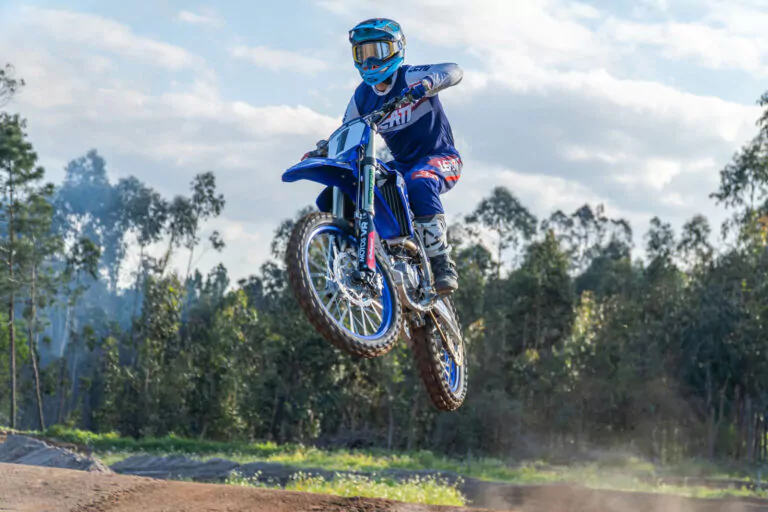
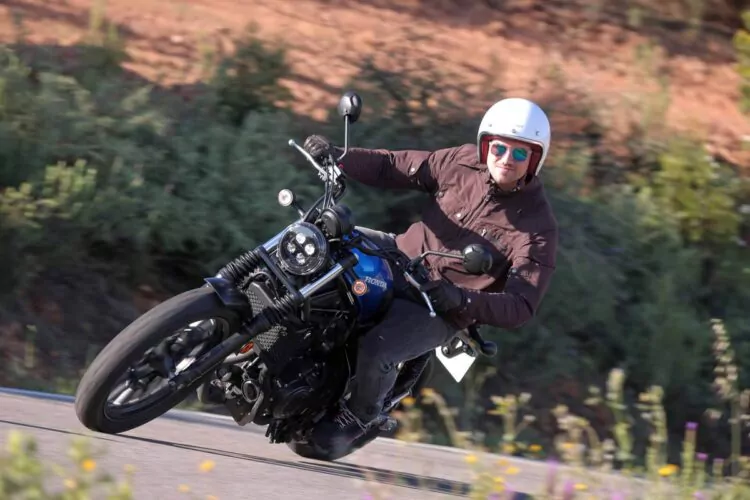
We left for last (although there are still some types of helmets nowadays, especially those linked to a more retro design) the more specific ones, such as motocross/enduro and open-face helmets. The first ones are almost exclusively intended for off-road riding, although many also enjoy using them on the road. Above all, if you use motocross goggles on the road, make sure to use specific goggles and not just sunglasses. And once again, pay attention to riding on highways as the MX visor may cause some discomfort and turbulence.
As for open-face helmets, there are many options, such as jet-type helmets with a small visor or a full visor. Naturally, these are the least safe helmets in this group, with our face much more exposed in case of an accident and even to natural elements (water, dust, insects, etc). Of course, during the summer it feels good to use an open-face helmet, but above all, avoid using it on highways or long trips (also due to the risk of sunburn), as well as on more powerful motorcycles or during more sporty riding. Above all, when riding a motorcycle, protection is never too much. Enjoy the ride!


